Auctions
As Christie’s Retreats, Bonhams and Phillips Seize Their Moment at London’s June Contemporary Auctions
The sales may have benefited from the buzz of the summer's Grand Tour.
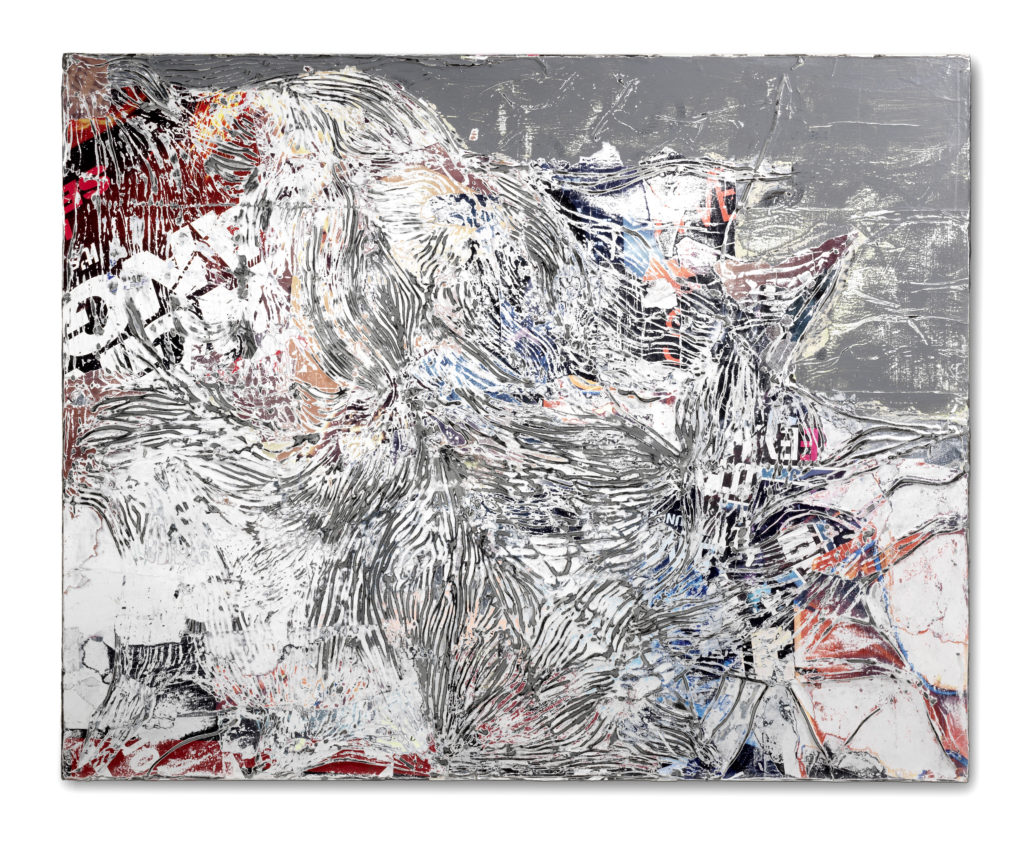
The sales may have benefited from the buzz of the summer's Grand Tour.

Colin Gleadell

With Christie’s ducking out of the contemporary art sales competition this month in London, Phillips and Bonhams might have been expected to pick up some of the slack. Whether they did is hard to pin down, but both delivered short, effective sales with only two lots unsold each.
Bonhams Big Night
Average prices at Bonhams contemporary art sales have increased from £8,000 to £100,000 in the last four years, they tell me. Today the low estimate was £4.7 million ($6.1 million) for 39 lots. They took £7.1 million ($9.2 million) in the end, which is probably their best ever for contemporary art.
The big difference to previous sales was the number of guaranteed lots—seven with a combined low estimate of £3.37 million ($4.4 million), or a hefty 77 percent of the low estimate value of the sale. Bonhams has traditionally eschewed the guarantee route. (One exception, a £1.2 million Boetti in 2011, proved difficult to sell.)
This afternoon, six of Bonhams’s top 10 lots were guaranteed—all by third parties. The strange thing about them all was that the auctioneer announced before each one that there could be no bidding over the internet.
The ace in the pack was Mark Bradford’s Dream Deferral (2009), which the seller bought at Christie’s in 2015 for £902,500. It sold to the Mnuchin Gallery for £1,565,000 ($2,000,000).
Another guaranteed lot which attracted competitive bidding was an untitled 1988 work by Rudolf Stingel which saw bidding from dealers Brian Balfour-Oats and Paolo Vedovi before selling for £461,000 ($600,000), double its estimate. The painting last sold at Sotheby’s in 2013 for £242,500.
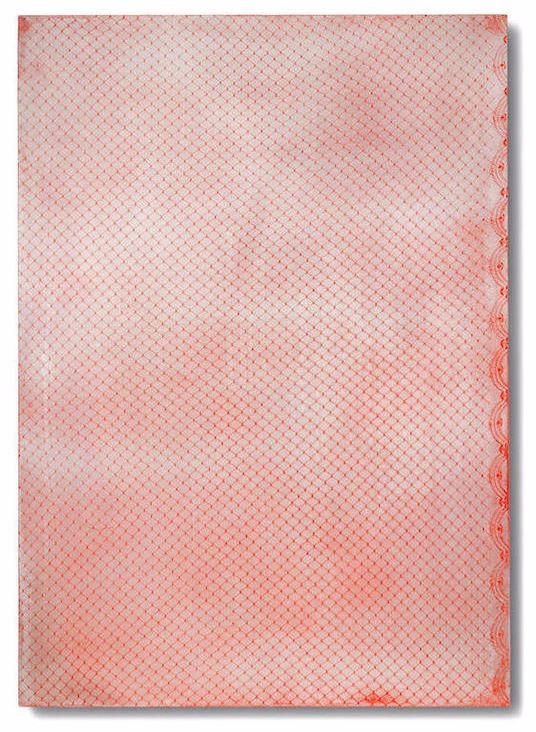
Rudolf Stingel, Untitled (1988). Image courtesy Bonhams.
Another good price came was the £641,000 ($830,000) paid, albeit within estimate, for School of London artist Leon Kossoff’s Red Brick School Building, Willesden Spring (1981), which was formerly in the Saatchi collection. It was the second highest price ever for Kossoff, and comfortably exceeded the £332,250 it made last time it went to auction, at Christie’s in 2008.
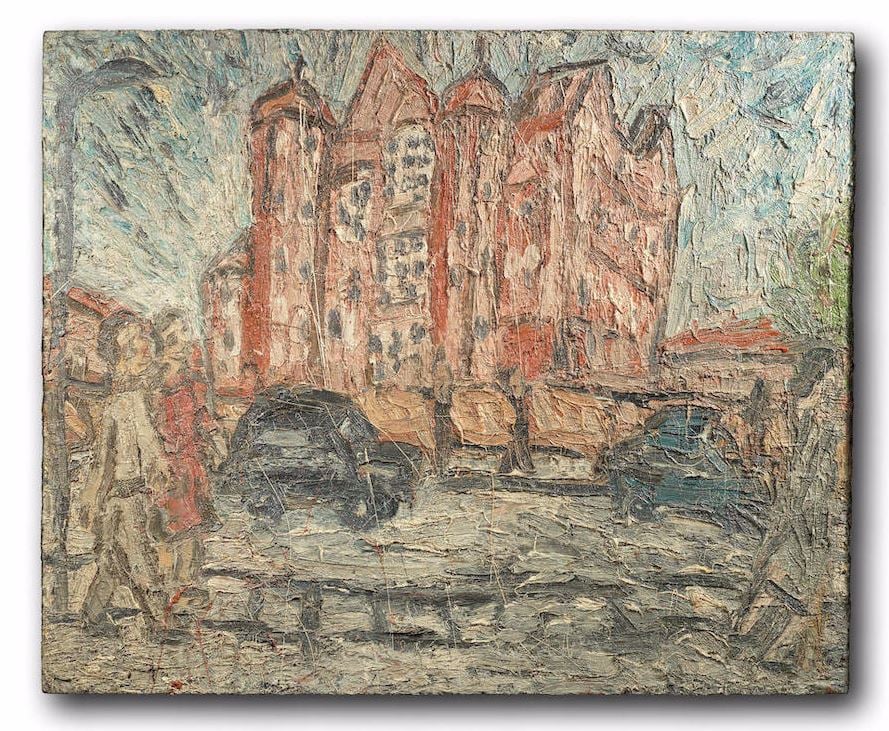
Leon Kossoff, Red Brick School Building, Willesden, Spring,/em> (1981). Image courtesy Bonhams.
Worth mentioning too is the £77,500 ($100,000) given by London’s Pyms Gallery for a hefty six-foot biomorphic stone sculpture made in 1984 by Barry Flanagan. It is probably a record for an early work by Flanagan whose later ubiquitous dancing hare bronzes have sold for over $1 million.
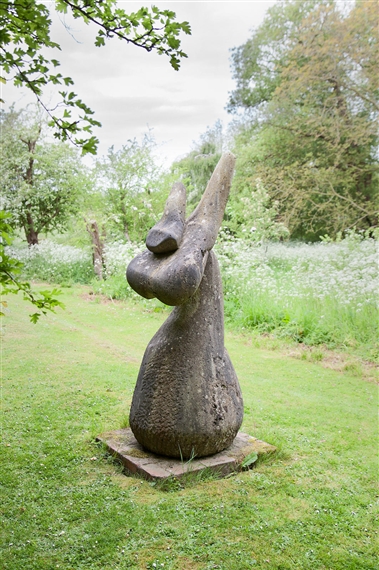
Barry Flanagan, Untitled (carving no. 6/84) (1984). Image courtesy Bonhams.
Phillips Seizes the Moment
A few hours later, Phillips was aiming at its highest total for a June sale in London since 2008, with an estimate of £17.9-25.4 million ($23.3-33 million). It succeeded, coming close to the top end with a £24.4 million ($31.4 million) sale in which only two of 31 lots went unsold.
The total was 100 percent up on last summer, and prompted Phillips chairman Ed Dolman to join the chorus of disbelief that anyone (i.e., Christie’s) would abandon a sale in London just when the art world had just descended on Europe for the Grand Tour: Venice, Basel, and documenta. Certainly the room looked more stacked with heavyweight dealers and advisers than usual, though few were actually bidding.
The sale set off at a canter when one of Wolfgang Tillmans’s now iconic Freischwimmer series of unique c-prints, number 84 from 2004, sold for a double-estimate record £605,000 ($780,450). The seller certainly backed the right horse when he bought it in 2012 for £39,680.
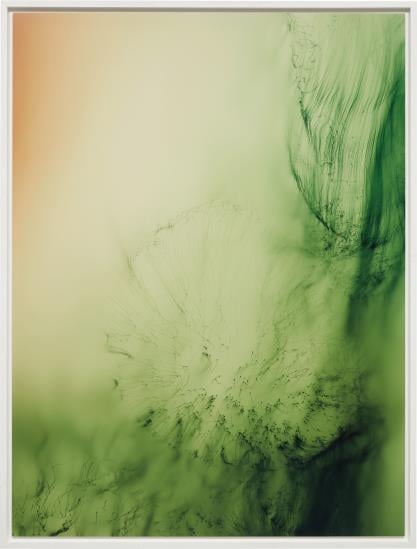
Wolfgang Tillmans, Freischwimmer #84 (2004). Image courtesy Phillips.
This was followed by a shapely bronze, Fascia III, by British artist Rebecca Warren which attracted bids from Bona Montagu of the Per Skarstedt Gallery before selling well over estimate for £329,000 ($380,000) to a phone bidder—a record for a single figure by the artist. Warren is having a solo show at Tate St. Ives later this year.
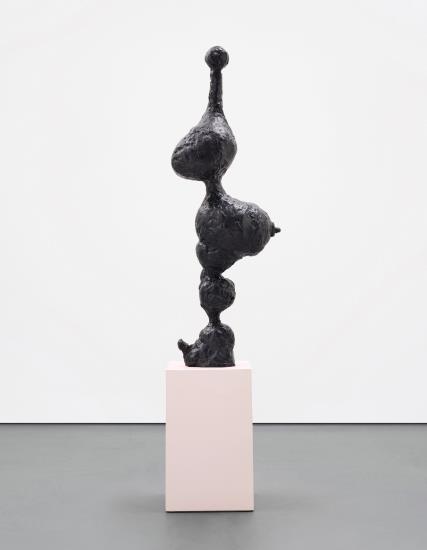
Rebecca Warren, Fascia III (2010). Image courtesy Phillips.
The next lot, a five-foot-square Keith Haring of two figures both fighting and embracing, topped the high estimate, selling to dealer Jude Hess for £2.3 million ($3 million), the second-biggest lot of the sale.
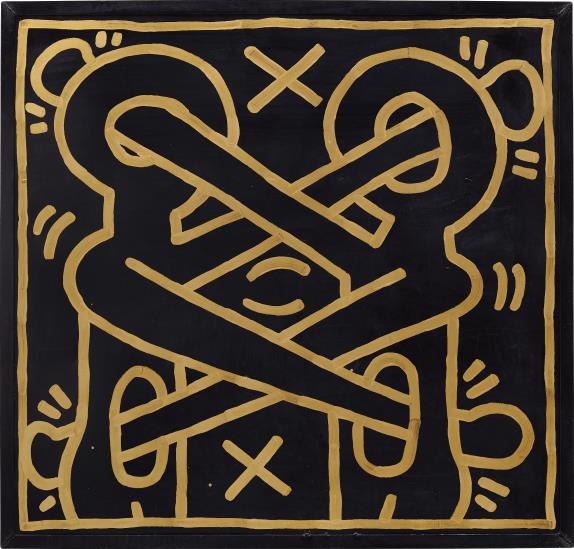
Keith Haring, Untitled (1984). Image courtesy Phillips.
Then came the guarantees. There were 12 guaranteed lots with a combined low estimate of £11.9 million ($15.5 million), or 65 percent of the low estimate value of the whole sale. They accounted for seven of the highest valued lots.
“The problem is you’re dead if you can’t offer guarantees,” said Dolman.
Some did ok; some not. A 2007 striped painting by Rudolf Stingel had been bought in 2015 for $1.4 million by dealer Paolo Vedovi. Back on the block with a guarantee, it sold on a single bid for £1.56 million ($2 million).
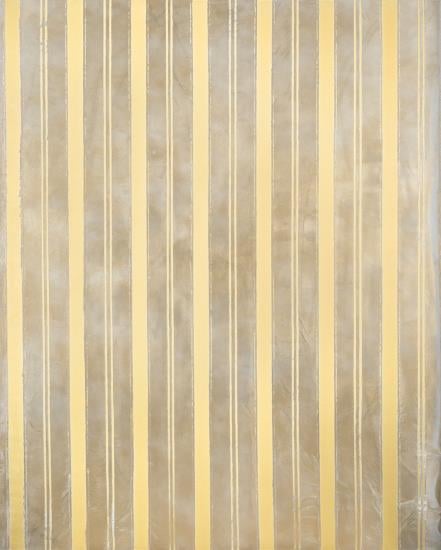
Rudolf Stingel, Untitled (2007). Image courtesy Phillips.
It also took only one bid to secure a small red abstract by Gerhard Richter that was guaranteed and sold for £2.4 million ($3.1 million). Fourteen years ago it had sold for just £128,500.
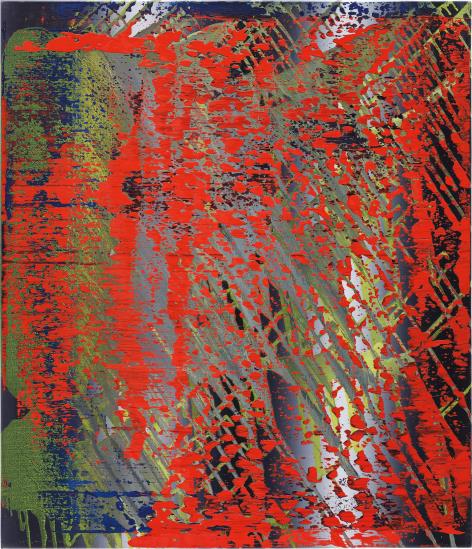
Gerhard Richter, Abstraktes Bild (682-4) (1988). Image courtesy Phillips.
Perhaps the bargain of the sale was a punctured silver Lucio Fontana guaranteed with a £1 million ($1.3 million) low estimate. In 2015 it sold for £965,000 to the Cingillioglu banking family. Now it now sold to New Yorker Roland Harrar, for £1 million.
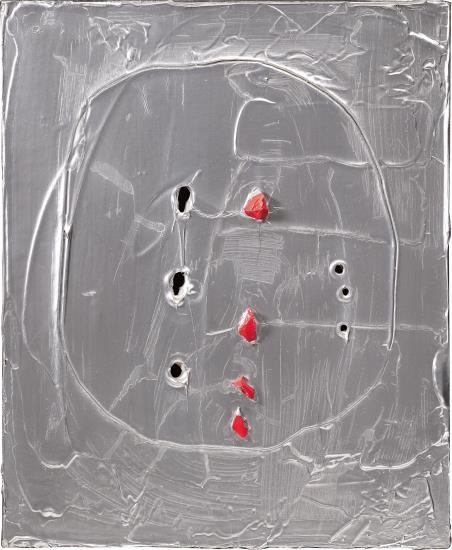
Lucio Fontana, Concetto Spaziale (1961). Image courtesy Phillips.
Harrar also bought another Cingillioglu disposal, a 2007 spot painting by Damien Hirst, just above its estimate, for £437,000 ($570,000). “I believe the Hirst market is on the way back,” Harrer opined as he left the saleroom.
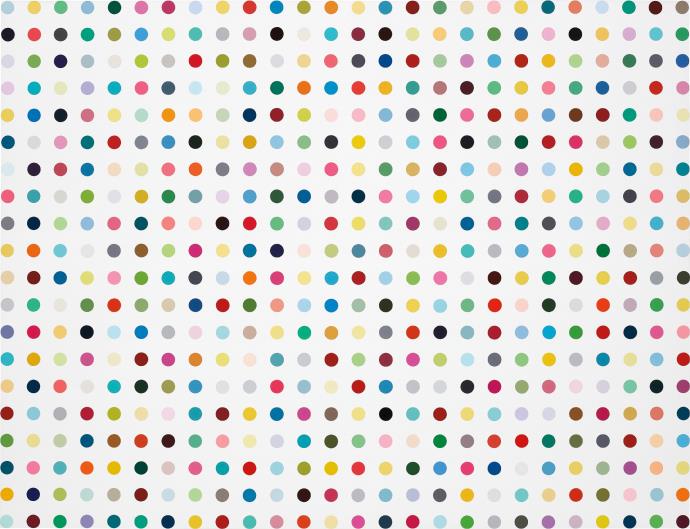
Damien Hirst, Ergocalciferol (2007). Image courtesy Phillips.
A third disposal by the Turkish bankers did better than most guaranteed lots. Sigmar Polke’s spraypaint-on-paper Ohne Title (Portratist) (1979), had cost £617,000 in 2015. Now it sold for £1.1 million ($1.4 million). The lure of financial gain still drives this market.
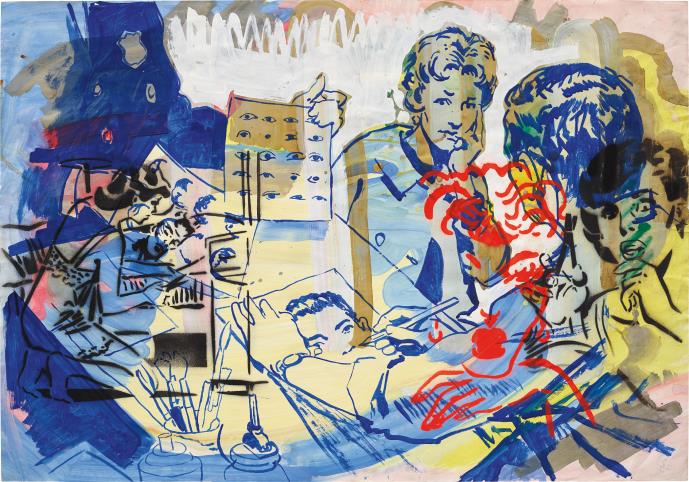
Sigmar Polke, Ohne Titel (Porträtist) (1979). Image courtesy Phillips.
There were also substantial gains in value for works by Louise Bourgeois and Peter Doig bought about six years ago. Works by Robert Gober, Sherrie Levine, or Oscar Murillo saw no real gain in value.
“Perhaps the sale reflects the historic highs of the stock market,” mused Dolman following the sale. He added, with a cheeky grin, that since Christie’s pulled out, Phillips’s market share had increased to 28 percent.